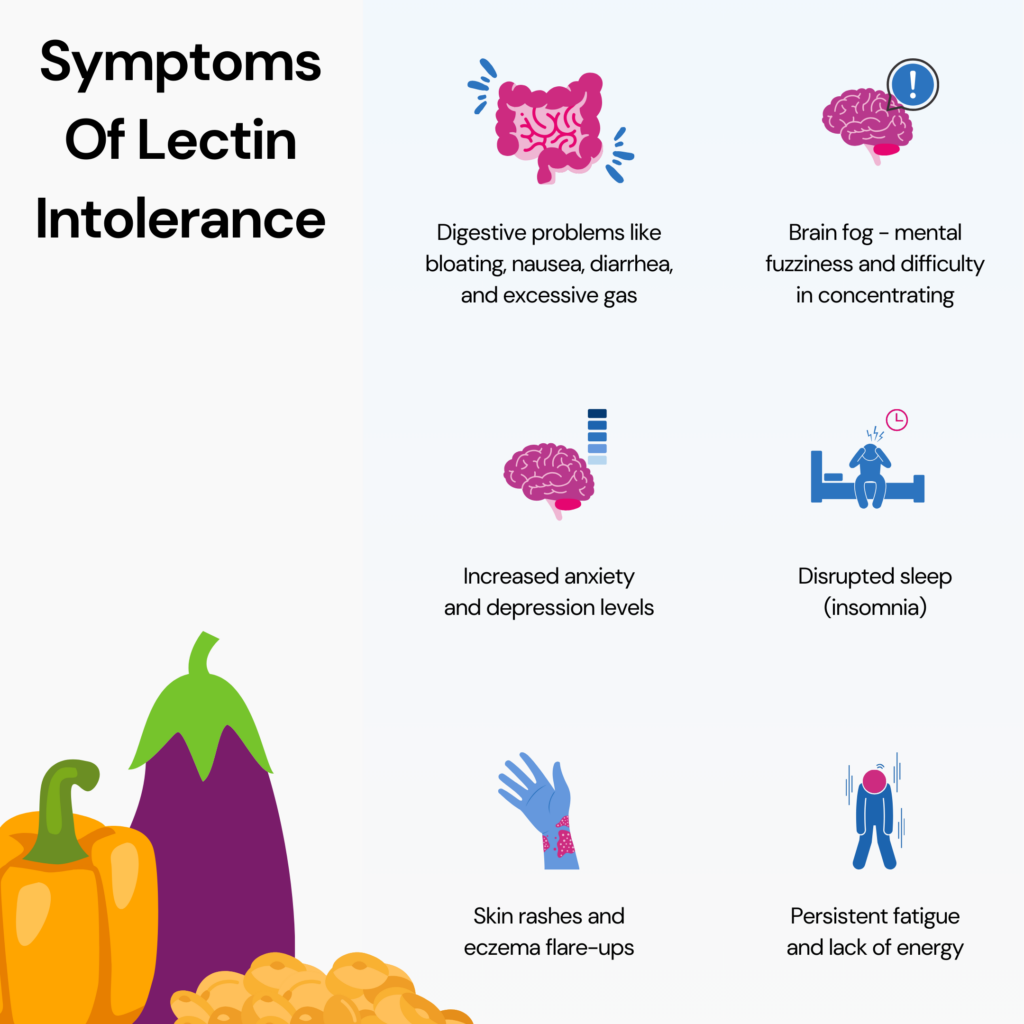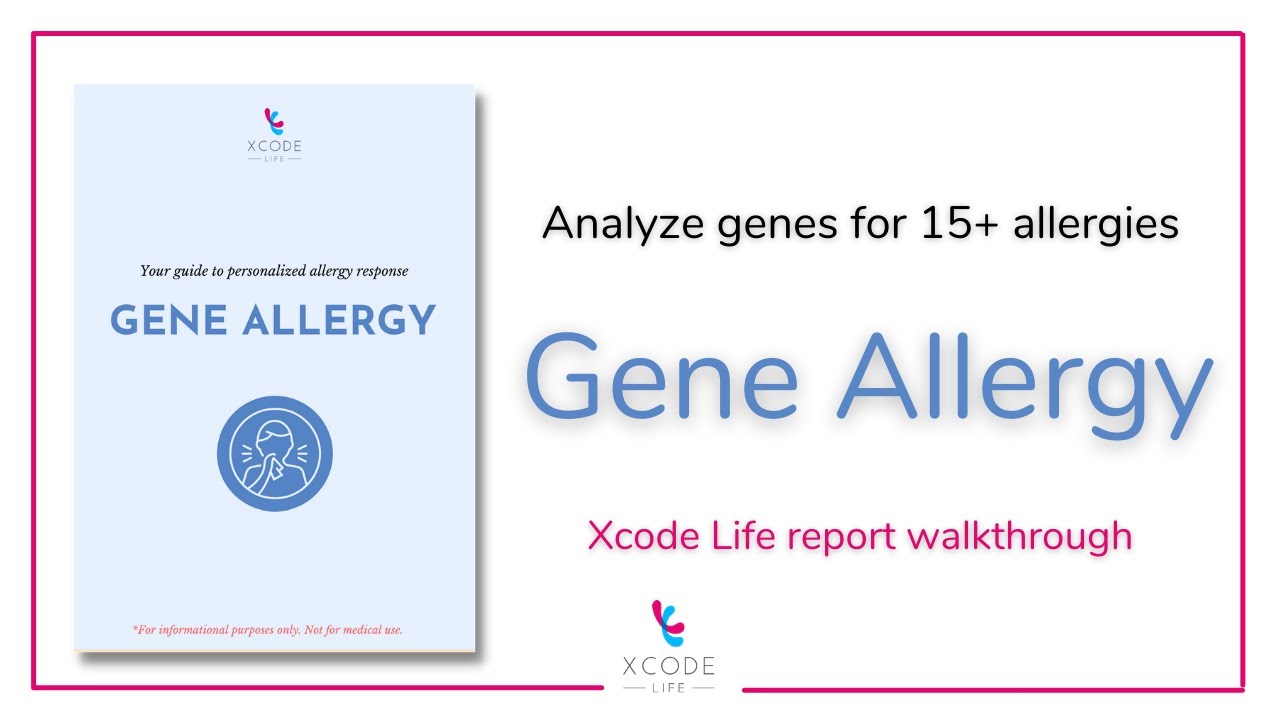Experiencing bloating and tiredness after meals? Does your stomach ache, or do you find it hard to concentrate after eating certain foods? There might be a hidden cause – lectins. Though found in many healthy foods, lectins can cause problems for some people, like tummy troubles, skin issues, and feeling worn out. Keep reading to learn about lectins, which foods have lots of them, signs to watch for, and most importantly – what you can do if they're making you feel unwell. If you want to take charge of your health and feel better, this article gives simple tips and useful information about dealing with lectins.
Did You Know?
Certain gene changes can make you prone to food intolerance and drug allergies. These genes are mostly involved in immune system regulation, and changes in them may result in the immune system attacking some components in the food. You can use your ancestry genetic testing data to uncover this information. Learn more.
What Is Lectin Intolerance?
Lectin intolerance is a food sensitivity that occurs when certain people react badly to foods with lots of lectins.
Lectins are proteins in plants like beans, grains, fruits, and vegetables. They stick to carbohydrates in our guts, messing with how we absorb nutrients and causing digestive discomfort.
Lectins are stable in acidic environments, which is a protective feature for plants. However, this means that it is not easily broken down in the gut.
Hence, while lectins may be fine for most people, some might experience adverse reactions or other symptoms after consuming them.
Lectin intolerance can cause various symptoms, highlighting the significant impact on overall health and well-being.

What Foods Are High In Lectin?
Several commonly consumed foods have high levels of lectins. Here are 6 examples:
- Red kidney beans: These protein-rich beans contain high levels of lectins that can upset your stomach if the beans aren't cooked properly.
- Soybeans: A great plant-based protein, but the lectins need to be removed through thorough cooking or processing before eating.
- Wheat: A staple food for many, but raw wheat, especially the germ, is loaded with lectins. Cooking and processing significantly reduce this.
- Peanuts: These legumes have healthy fats and protein, but roasting or heating doesn't reduce their lectins, which may cause problems.
- Tomatoes: Nutritious with vitamin C and lycopene, but tomatoes also contain lectins. However, evidence of them causing issues is limited.
- Potatoes: Nutritious and versatile, but like tomatoes, potatoes are nightshades containing lectins that can bother some people.
Adding to the list of foods already mentioned above as high in lectins, here are some more examples:
- Walnuts
- Kale
- Black-eyed peas
- Almonds
- Egg yolk
- Orange
- Black beans
- Green tea
- Lemon
- Oats
Causes Of Lectin Intolerance
Understanding what might increase the risk of lectin intolerance is crucial for managing symptoms. Here are some potential factors:
- Frequent antibiotic use: Antibiotics can mess up the good bacteria in your gut, which might change how your body deals with lectins.
- An unhealthy gut: Imbalances in the gut microbiome could be a possible cause of lectin sensitivity.
- Leaky gut issues: Increased intestinal permeability can allow lectins to pass into the bloodstream, possibly triggering immune reactions.
- Plant-based diets high in lectin-rich foods: Legumes and grains are common lectin sources, so if you eat these frequently, you may be at higher risk.
- Autoimmune conditions or family history: Lectins are believed to worsen autoimmune diseases in sensitive patients.
- Joint problems like rheumatoid arthritis: Lectin sensitivity may worsen joint issues for some individuals.
- Neurological concerns: Although less common, lectins have been associated with mental health problems in certain cases.
Lectin Sensitivity Genes
The specific genes associated with lectin sensitivity are still being studied, but two genes might be involved:
- CNR1: This gene affects gut function and inflammation. A specific version of CNR1, called rs1049353, might make people more sensitive to lectins.
- MTHFR: This gene deals with folate and DNA. Some studies suggest specific versions of MTHFR might make it harder for the body to detoxify, which could make someone more sensitive to lectins.
Remember, lectin sensitivity involves many genes and other factors, and research is still ongoing to understand it better.
FAQs About Lectin Intolerance
Are Bananas High In Lectin?
Bananas contain moderate lectins, but they are mostly harmless, called agglutinins. The human gut does not readily absorb these agglutinins, and they do not cause significant health problems for most people.
Is Coffee High In Lectins?
While coffee does contain lectins, the amount is generally considered low and not thought to be harmful to most people. Some studies suggest that coffee may have some health benefits, like lowering the risk of neurodegenerative diseases and type 2 diabetes.
How Do You Flush Lectins Out Of Your Body?
There is no known way to flush lectins out of your body. Here's why:
- Lectin digestion: Once ingested, lectins are either bound and broken down in the digestive system by enzymes or pass through undigested and eliminated through waste.
- Natural elimination: The body naturally eliminates undigested lectins that pass through the digestive system.
- Focus on management: If you suspect lectin sensitivity, it should be on managing potential reactions, not flushing them out.
Are Lectins Bad For Everyone?
Lectins do not negatively impact everyone. While some people may develop symptoms after eating lectin-containing foods, others can tolerate them without issue.
It's important to note that responses vary on an individual basis. Testing your sensitivity to lectins is essential.
Additionally, foods with lectins offer health benefits like antioxidants, stabilized insulin, and blood sugar regulation.
Research shows populations eating diets high in lectin-rich legumes, whole grains, and nuts have lower rates of cardiovascular disease and type 2 diabetes.
So, while lectins can cause problems for some, they also provide benefits.
It's best to consult a professional to determine if you can incorporate lectin-rich foods in moderation as part of an overall balanced approach.
Can You Fix Lectin Intolerance?
Managing lectin intolerance involves alleviating symptoms rather than curing the underlying condition.
As many reported symptoms involve gastrointestinal distress, reducing or eliminating high-lectin foods from one's diet may provide relief.
Restricting the consumption of foods that worsen symptoms under a healthcare professional's instructions can help manage discomfort.
The goal is to identify and minimize the consumption of specific high-lectin foods that cause symptoms in each individual.
This personalized approach helps tune into the body's signals, control flare-ups, and improve overall wellness.
Tips For Reducing Lectin Intake
Reducing lectin intake can help alleviate discomfort for those sensitive to these compounds.
Here are some straightforward ways to lower your lectin consumption:
- Cooking methods: Boiling or stewing foods deactivates lectins; soak and boil dried beans before consuming.
- Choose canned beans: Canned beans have lower lectin levels due to their cooking process.
- Sprouting and removing hulls: Sprouting grains and beans and removing outer hulls reduces lectin content.
- Consider digestive sensitivity: Individuals with digestive issues may be more sensitive to lectins; adjust your diet accordingly.
- Limit problematic foods: Consider reducing the foods that cause discomfort due to lectins, especially if you have digestive sensitivities like irritable bowel syndrome.
Note: It's best to consult a healthcare provider for personalized guidance, considering your health history and symptoms.
Summary
Lectin intolerance can cause digestive issues, fatigue, and brain fog in some individuals.
While lectins are found in various healthy foods, they can trigger reactions in sensitive individuals.
These plant proteins can bind to gut carbohydrates, potentially impacting nutrient absorption and causing discomfort.
Bloating, nausea, diarrhea, brain fog, anxiety, fatigue, skin issues, and disrupted sleep are potential signs of lectin intolerance.
Examples of high-lectin foods include red kidney beans, soybeans, wheat, peanuts, tomatoes, potatoes, and others.
Frequent antibiotic use, gut imbalances, leaky gut, plant-based diets high in lectins, and certain genes might increase the risk.
To reduce lectins, you can boil, soak, sprout, or choose processed beans. Depending on your sensitivity, you may also need to adjust your diet.
References
https://www.hsph.harvard.edu/nutritionsource/anti-nutrients/lectins/
https://www.healthline.com/nutrition/foods-high-in-lectins
https://www.ncbi.nlm.nih.gov/pmc/articles/PMC10084985/
https://www.healthline.com/nutrition/dietary-lectins
https://www.ncbi.nlm.nih.gov/pmc/articles/PMC5960708/
https://pubmed.ncbi.nlm.nih.gov/21892520/
https://www.ncbi.nlm.nih.gov/books/NBK5968/






